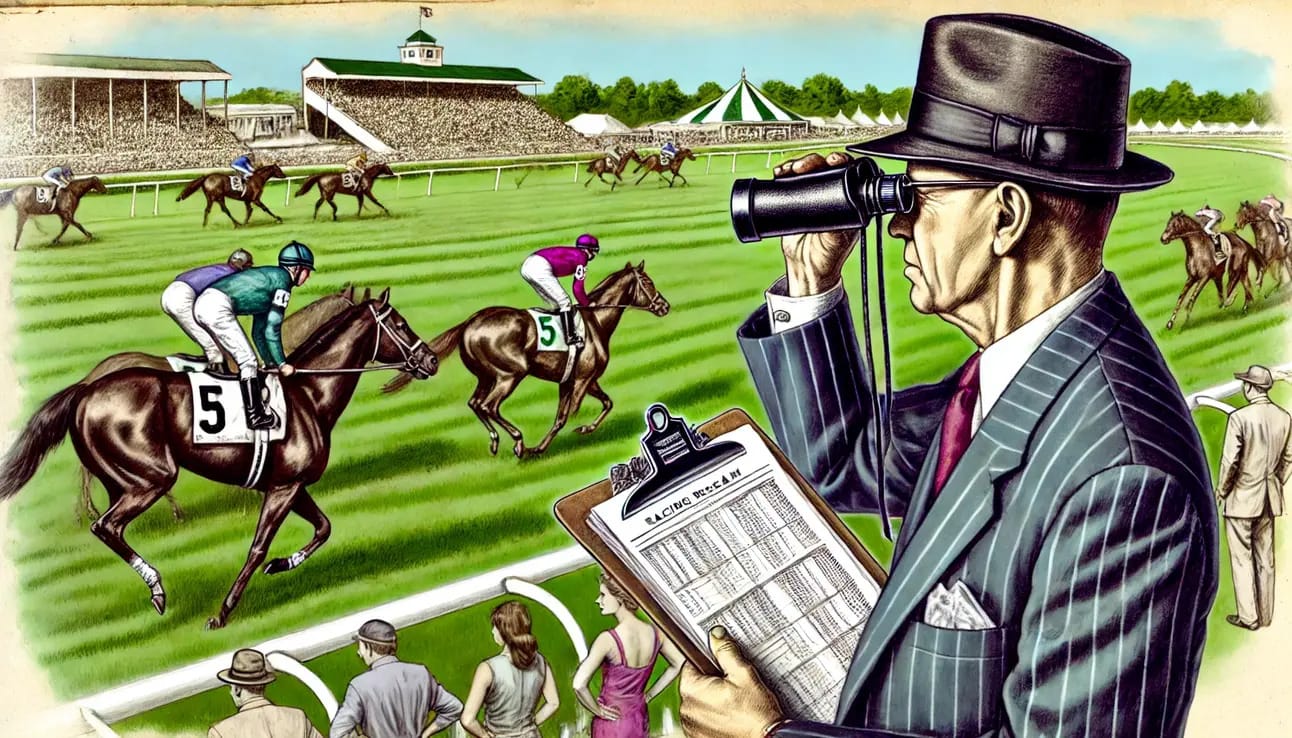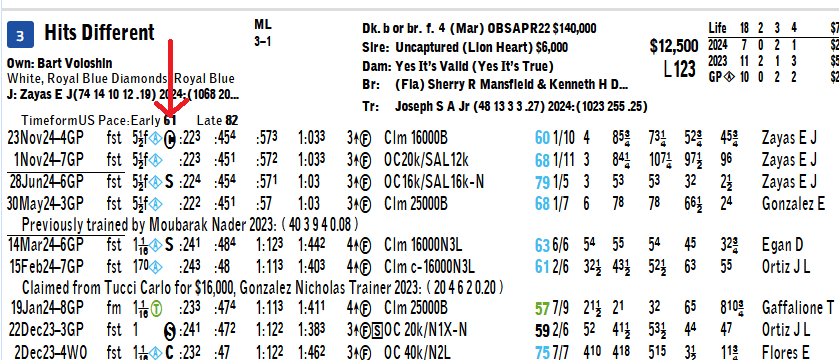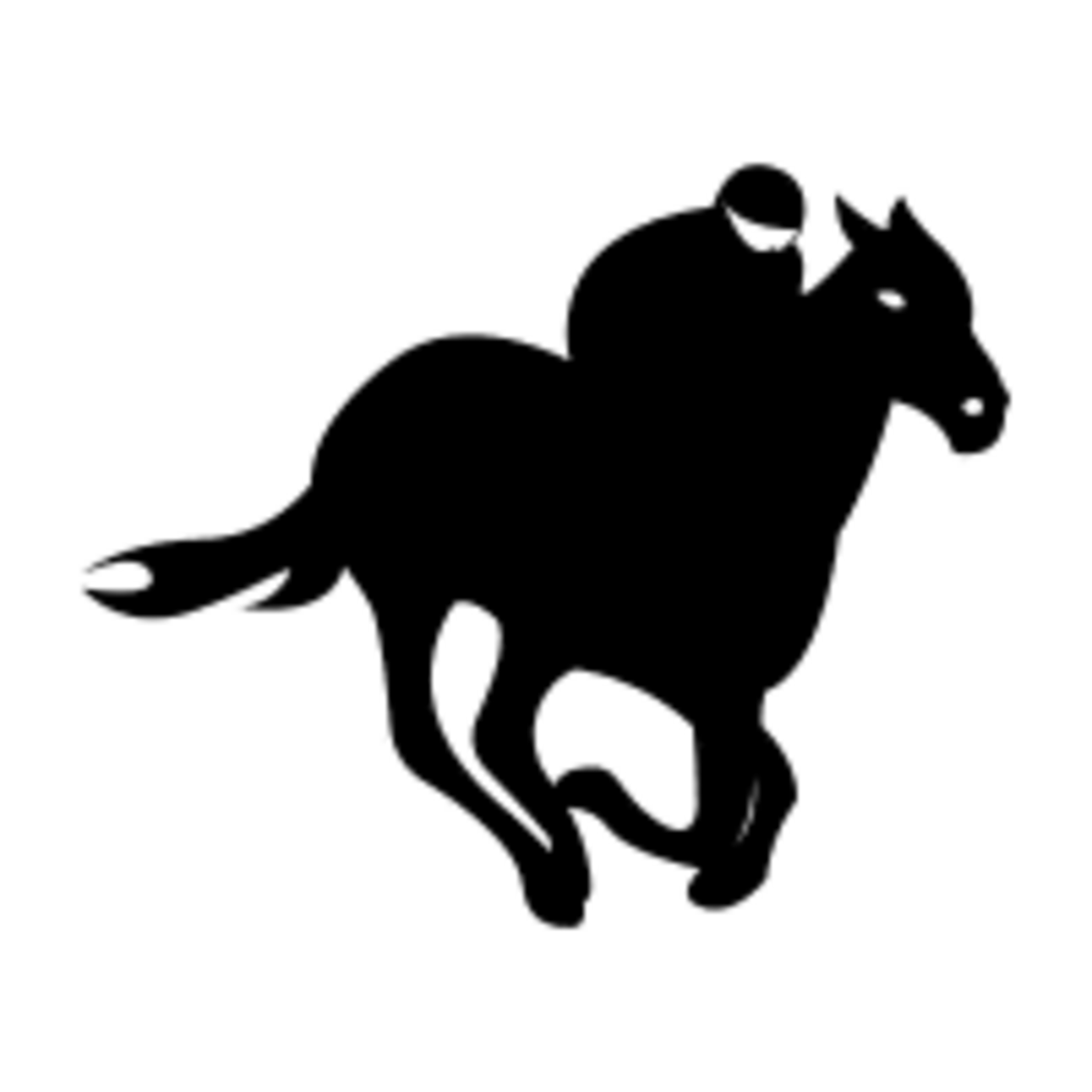
📖🏇 Handicapping with Tom: Understanding Track Bias – A Winning Edge
One of the most crucial, yet often overlooked, aspects of handicapping is identifying track bias—the tendency of a racetrack to favor certain running styles or post positions. Some days, front-running speed dominates, while other days, late closers seem unbeatable. Recognizing track bias can make the difference between a winning ticket and a missed opportunity.
Why Track Bias Matters
Natural Edge: Horses that align with the day's bias have an inherent advantage, requiring less effort to win.
Strategic Handicapping: A strong bias can expose false favorites or uncover live longshots overlooked by the public.
Context for Performance: A horse’s effort might look worse than it was if they ran against the bias, signaling potential value next time out.
How to Spot Track Bias
Watching Races Live or via Replays
The most effective way to spot bias is by closely watching every race:
Track Results: Are most winners going wire-to-wire? Or are they coming from off the pace?
Path Preference: Are horses winning on the rail, middle of the track, or in the widest lanes?
Visual Cues: Observe if a horse appears to struggle or excel in certain parts of the track.
Using Daily Racing Form (DRF) Charts
If you don’t have access to live races or replays, DRF charts provide invaluable clues:
Running Lines: Note the positions of horses at key points (1/4 mile, 1/2 mile, etc.). If most winners are leading early, the track may favor speed.
Margins: Compare the lengths between horses at the finish. Are front-runners drawing away, or are closers consistently gaining ground?
Post Positions: Analyze which post positions are producing winners—some tracks favor inside or outside draws depending on the bias.
Explanation of Track Bias Symbols in the Daily Racing Form
In the Daily Racing Form (DRF), the symbols 'S' and 'C' provide insights into track bias, specifically whether the surface on that day favored front-running horses or late closers. Here’s a detailed breakdown:
Bold Symbols with Black Background
Bold 'S' (with a black background):
This indicates the track was decidedly favoring front speed.
Horses that got to the lead or ran prominently early were at a significant advantage that day.
Example: A speed bias on a dry track where front-runners dominated.
Bold 'C' (with a black background):
This means the track was decidedly favoring late closers.
Horses coming from the back of the pack, rallying late, had the upper hand on that day.
Example: A strong closer bias often occurs when tracks are deep, tiring, or rain-softened.
Plain Symbols (No Background)
Plain 's':
A mild bias toward front speed.
Front-runners or early-pace horses had a slight edge, but it wasn’t overwhelming.
Plain 'c':
A mild bias toward late closers.
The track leaned toward horses rallying late, but it wasn’t extreme enough to consider it a major advantage.
How to Use These Symbols
Spot Track Bias Trends:
If you see multiple bold 'S' symbols over several days, the track may be playing very fast, heavily favoring front-end speed.
Conversely, multiple bold 'C' symbols suggest a strong closer bias, possibly due to track conditions.
Contextualize Horse Performance:
If a horse rallied against a strong speed bias (bold 'S' day) and still performed well, they deserve extra credit.
If a horse faded on a day favoring closers (bold 'C' day), they may have been compromised by the bias.
Spot Overlays:
Horses that previously ran against a bias often go unnoticed by the betting public, creating excellent value opportunities.

Example from DRF Image Above:
On November 23rd :
The bold 'C' with black background indicates that day at Gulfstream Park played strongly to late closers.
Horses coming from off the pace likely performed well, and front-runners struggled to hold on.
On June 28th:
The S with no background indicates that day at Gulfstream Park played a mild bias to the front speed
By identifying these symbols and cross-referencing them with a horse's running style, you can pinpoint horses that were advantaged or disadvantaged by the bias. This is one of the most powerful tools in advanced handicapping.
Tips for Applying Track Bias
Start with Recent Trends: Track bias can shift daily or persist over several days. Use past performance to identify trends.
Adjust Based on Weather: Rain or track maintenance can dramatically alter surface conditions, creating or eliminating bias.
Bet Against the Crowd: Public money often overvalues favorites running against the bias, creating value opportunities.
Red Flags to Watch For
False Bias: A race result might appear to signal a bias but could be due to other factors (e.g., one dominant horse).
Quick Changes: Track maintenance crews often groom the surface between races, potentially neutralizing or reversing the bias.
The Takeaway:
Tracking bias requires discipline, observation, and constant adjustment. Whether you watch every race, review replays, or decode the DRF symbols, understanding track tendencies will elevate your handicapping game. When you identify a bias others miss, you can cash in on the edge.









